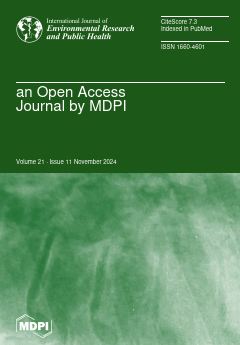This investigation meticulously examined the elemental composition of 64 water samples collected during the seasons of spring, summer, autumn, and winter of the year 2023. The average seasonal concentrations of arsenic (As), beryllium (Be), cobalt (Co), cadmium (Cd), copper (Cu), lithium (Li), molybdenum
[...] Read more.
This investigation meticulously examined the elemental composition of 64 water samples collected during the seasons of spring, summer, autumn, and winter of the year 2023. The average seasonal concentrations of arsenic (As), beryllium (Be), cobalt (Co), cadmium (Cd), copper (Cu), lithium (Li), molybdenum (Mo), nickel (Ni), lead (Pb), selenium (Se), uranium (U), mercury (Hg), aluminum (Al), barium (Ba), chromium (Cr), iron (Fe), manganese (Mn), strontium (Sr), vanadium (V), zinc (Zn), calcium (Ca), potassium (K), magnesium (Mg), sodium (Na), and chlorine (Cl) as well as SO
4 and dry residue were computed at 16 strategically selected sites along the Bolshaya and Malaya Almatinka, Esentai, and Kargalinka rivers situated in Almaty. The sampling locations were categorized into three distinct sectors: upper (adjacent to mountainous regions), middle (urban zone), and lower (exceeding city limits), thereby facilitating the examination of discrepancies in water quality and elemental concentrations. The results reveal that surface water resources in Almaty, particularly concerning As, Ni, Cr, U, and Pb, may present a considerable carcinogenic risk if utilized for consumption purposes. This is especially alarming given that these rivers constitute a vital source of drinking water for the inhabitants of the city. Specifically, at two sampling locations along the Bolshaya and Malaya Almatinka rivers in proximity to significant urban thoroughfares, untreated river water displayed an elevated carcinogenic risk (CR ~ 10−
2). These results highlight the urgent necessity for enhanced water treatment and ongoing monitoring to safeguard public health.
Full article





